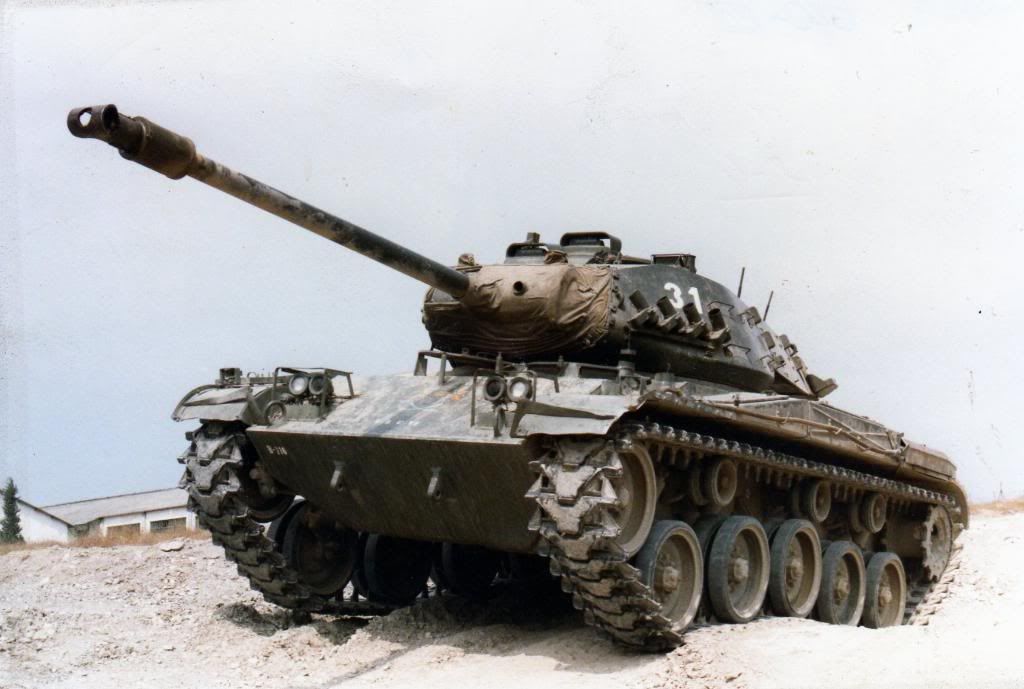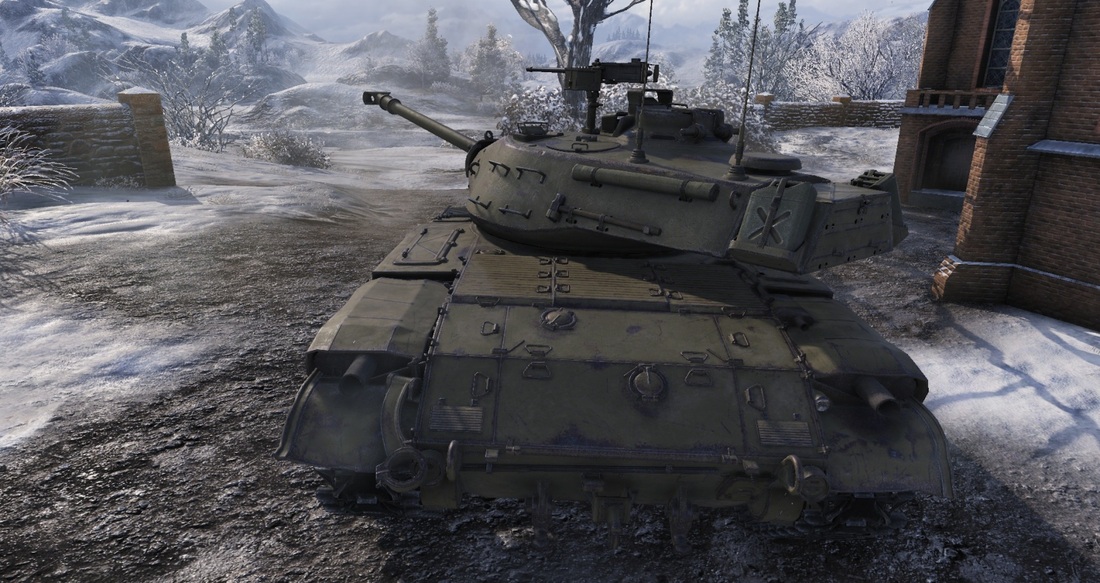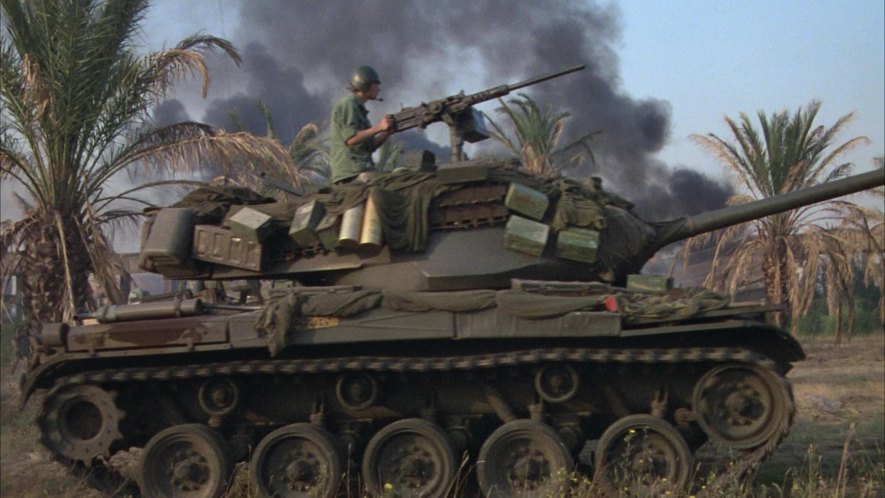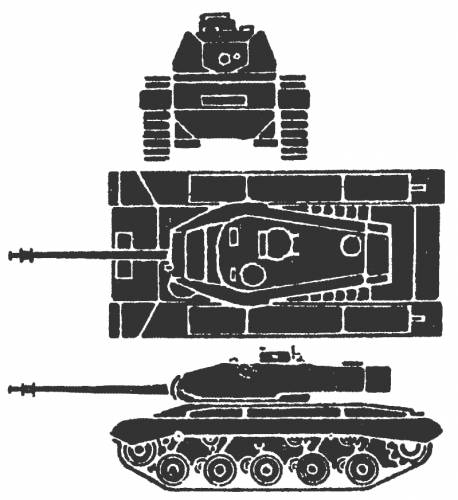Domino
Warden of the Ice

Image Source: Here
Intent: Update available tanks to my allies and customers that are more than rolling slabs of armor with massive arsenals.
Development Thread: If necessary
Manufacturer: Phenex Industries
Model: Charioteer Light Tank
Affiliation: Open Market
Modularity: Ammunition Load-out
Production: Mass-Produced.
Material: Durasteel impregnated with Neutronium,
Role: Light Tank
Height: 2.71 M
Length: 5.8 M
Width: 3.2 M
Weight: 23.5 Tons
Minimum Crew: 2
Optimal Crew: 4 Commander, Driver, Gunner, Loader
Propulsion: Tracks
Top Speed: 130 KM/H (80 mph)
Armaments: 76mm MDC Main cannon
Mb-835 Coaxial
Mb-835 Pintle-mounted
LVOS 8 tubes
Squadron Count: 4
Passenger Capacity: 1 Internally, 12 Riding the outside unsecured and unprotected
Cargo Capacity: 50kg + crew gear. It is possible to attach stuff to the exterior but at the risk of it becoming damaged or falling off.
Misc. Equipment: Electric engine. De-Ionizers for the cannon, NBC protected, amphibious, Spall-liner, night/thermal/enhanced vision modes, targeting computer, sensor array, camouflage net, radar, automatic mapping, communications scrambler, IFF system, air conditioning, BLR-C/S-M1, fire extinguisher.
Description: The Charioteer Light Tank is a very fast, maneuverable, simple to operate, and highly reliable tank with a potent main gun for engaging armored targets at range. However to achieve that speed most of the armor had to be sacrificed to the point where anything more than a heavy repeater or grenade will give it serious trouble. Against other tanks this wasn't seen as a problem as most tanks are now supporting high-caliber, high-velocity, cannons or artillery pieces that will penetrate most heavy armor regardless. The Charioteer instead relies on its speed and low profile to survive, attacking from ambush, unexpected positions, and long range are its hallmarks. These characteristics make it an excellent scouting or flanking tank for harassment at range. Holding a corner against enemy tanks and street fighting are the last things you'd want to do as it lacks the armor to survive. At close range this tank is little more than a speed bump to main battle tanks.
Engine
Where things get interesting is the tank's powerplant, which is an electric engine rather than a fuel-based internal combustion. On top of the rear engine deck are three panels that fold open to reveal six solar panels that charge an ionization reactor. The hatches themselves only have a thin sheet of metal to protect the panels, though the regular hull armor runs underneath, and they must be unlocked from inside the tank. Thirty minutes of charge time provides four hours of run time for a max of twenty hours for a two-and-a-half hour charge.
This allows the tank to operate without an atmosphere, with zero emissions, and much quieter than normal, at a reduced chance of fire and zero fuel costs. The downside being that it takes much longer to recharge when other tanks can refuel in minutes. If caught charging, the Charioteer must fight with the panels left open as closing them may interfere with the turret's operation and they will almost certainly be damaged or destroyed by concussive forces or shrapnel even if the tank survives. The engine compartment's interior is lined with TTAA-C to prevent Ion damage and EMPs from completely disabling the tank and allowing it to at least flee. The engine is easily repaired and simple to maintain in the field. Like modern cars, it can shut off automatically when sitting idle to conserve power, though this feature can be disabled when heading into combat as there's a second's delay before it starts up again which can be deadly.
This allows the tank to operate without an atmosphere, with zero emissions, and much quieter than normal, at a reduced chance of fire and zero fuel costs. The downside being that it takes much longer to recharge when other tanks can refuel in minutes. If caught charging, the Charioteer must fight with the panels left open as closing them may interfere with the turret's operation and they will almost certainly be damaged or destroyed by concussive forces or shrapnel even if the tank survives. The engine compartment's interior is lined with TTAA-C to prevent Ion damage and EMPs from completely disabling the tank and allowing it to at least flee. The engine is easily repaired and simple to maintain in the field. Like modern cars, it can shut off automatically when sitting idle to conserve power, though this feature can be disabled when heading into combat as there's a second's delay before it starts up again which can be deadly.
A 76mm stabilized mass-driver acts as the Charioteer's main gun and provides accurate fire out to ten kilometers. Paired with its quick reload, this makes the tank a very effective sniper and flanking skirmisher, though its low ammo count of just sixty shells hinders the tank during longer engagements especially against enemies with energy-based weaponry that lack such a problem. With four different shell types, the canon is highly flexible in its engagement options. A crew member is required to load the cannon by hand as an auto-loader would lack the flexibility, wouldn't change shell type mid-load, and can't understand shouted orders in the heat of battle. Two de-ionizers are paired with the mass driver to counteract the effects of ion weaponry. The shells are stored along the sides and rear of the loader's station and are kept in individual, fire-proof canisters that prevent ammunition cook off in the event of a fire. The lids are spring loaded to pop open at the push of a lever over each and the shell pops up a few inches to allow the loader to grasp it. The lids can be labeled for shot identification. Can be targeted with either a digital fire control system or manually with a scope.
For a coaxial gun, the Charioteer sports a Mb-835 repeating blaster for anti-infantry and light vehicle work. The blaster has an excellent rate of fire and accuracy out to 1,400 meters, but lacks punching power for penetrating more heavily armored targets, even suffering against the more advanced heavy infantry armor. The Mb is tied into the tank's engine for 'unlimited' power and can use one of the main gun's de-ionizers though this takes it away from the 76mm. Due to it's positioning left of the cannon and its right-mounted power pack, it can no longer accept them and becomes inoperable should the engine lose power.
Above the commander's position and just forward of his hatch is a second Mb-835 pintle-mounted for the commander's use. This is excellently placed to provide fire forward and to the sides of the turret's facing direction but can only be fired along a rear arc if the commander is willing to fully exit the tank and get on the front of the turret to do so. Firing requires the commander to expose most of their body from the chest up which has lead many to start wearing blast vests and simple helmets easily donned or doffed. Unlike the coaxial, this Mb isn't tied into a separate power source and relies on 300 round power packs. On the inside of the turret are brackets for two spares though some crews add extras to the exterior of the vehicle for quicker and easier access.
Finally the tank mounts 8 LVOS tubes, 4 to a turret side, as a final trick when its time to get out of Dodge. A pair of interior switches at each of the gunner's, driver's and commander's positions allow the crew to fire them as needed to establish a screen of either smoke or tear gas to obscure the tank and give it time to back off. However some crafty crews replace one of the loads with grenades turning the system into a deadly anti-personal weapon in a close arc around the front of the turret. Each activation only triggers four of the tubes (two a side) giving this system two uses before someone has to manually replace the charges and recap the tubes. Due to the one-shot nature of the system, a commander must choose what load-out to bring before a mission and his choice often depends on how close his own infantry are going to be and expected enemy composition. To prevent two crew members from launching both at once, whoever's firing typically shouts "Smoke A!" or "Smoke B!" before doing so. A simple switch safety prevents accidental discharge as a hidden tank suddenly surrounded by smoke becomes a fairly obvious target.
For a coaxial gun, the Charioteer sports a Mb-835 repeating blaster for anti-infantry and light vehicle work. The blaster has an excellent rate of fire and accuracy out to 1,400 meters, but lacks punching power for penetrating more heavily armored targets, even suffering against the more advanced heavy infantry armor. The Mb is tied into the tank's engine for 'unlimited' power and can use one of the main gun's de-ionizers though this takes it away from the 76mm. Due to it's positioning left of the cannon and its right-mounted power pack, it can no longer accept them and becomes inoperable should the engine lose power.
Above the commander's position and just forward of his hatch is a second Mb-835 pintle-mounted for the commander's use. This is excellently placed to provide fire forward and to the sides of the turret's facing direction but can only be fired along a rear arc if the commander is willing to fully exit the tank and get on the front of the turret to do so. Firing requires the commander to expose most of their body from the chest up which has lead many to start wearing blast vests and simple helmets easily donned or doffed. Unlike the coaxial, this Mb isn't tied into a separate power source and relies on 300 round power packs. On the inside of the turret are brackets for two spares though some crews add extras to the exterior of the vehicle for quicker and easier access.
Finally the tank mounts 8 LVOS tubes, 4 to a turret side, as a final trick when its time to get out of Dodge. A pair of interior switches at each of the gunner's, driver's and commander's positions allow the crew to fire them as needed to establish a screen of either smoke or tear gas to obscure the tank and give it time to back off. However some crafty crews replace one of the loads with grenades turning the system into a deadly anti-personal weapon in a close arc around the front of the turret. Each activation only triggers four of the tubes (two a side) giving this system two uses before someone has to manually replace the charges and recap the tubes. Due to the one-shot nature of the system, a commander must choose what load-out to bring before a mission and his choice often depends on how close his own infantry are going to be and expected enemy composition. To prevent two crew members from launching both at once, whoever's firing typically shouts "Smoke A!" or "Smoke B!" before doing so. A simple switch safety prevents accidental discharge as a hidden tank suddenly surrounded by smoke becomes a fairly obvious target.
Miscellaneous
- Due to the electrical nature of the engine and NBC protection of the tank sealing it. With the vents closed the Charioteer can drive under water to cross rivers and lakes while the crew have a five hour air supply. This also allows the tank to hide if being hunted or to set up an ambush if properly timed. However the tank runs the risk of becoming stuck in any deep mud, especially if left sitting for awhile.
- The disk on the top of the turret behind the crew compartment is the armored intake vent for the tank crew's air. When unlocked, it's easily lifted to expose the NBC system for maintenance. The system will protect the tank and crew for a day of exposure before it becomes to inundated to perform well.
- De-ionizers for the main gun are capable of clearing ion interference once every ten seconds each after which firing can resume. Under continuous ion bombardment this is next to useless however and the Charioteer would be better served by retreating to cover.
- On either side of the exterior stowage box is space to mount a ten gallon jerry can for extra crew water. The box is usually used to hold extra LVOS rounds or other miscellaneous gear.
- Low-profile tool boxes are mounted on top of the tracks and hold recovery and other basic tools needed for working on a tank or fixing a track. The middle one on the driver's side holds a camouflage netting that can be pulled over the tank while stationary.
- As with several other Phenex vehicles, the Charioteer automatically maps the area around it and can send this information to its allies and command structure.
- The tank has both a long-range planetary radio and one that can reach ships in high-orbit or other relays. Both use comm-scramblers and can turn down their range to prevent operational overlap or broadcast detection.
- While exceptionally fast for a tracked vehicle, over rough, wooded, or other difficult terrain, the Charioteer can only safely attain about half its max speed without risking ripping its own tracks off on a rock or stump.
- Max trench crossing= 1.8m, Max vertical obstacle= .71m, Min turning radius=pivot, Torsion bar suspension.
Pros/Cons
+Incredibly fast for a tracked vehicle
+Good supporting equipment
+Amphibious
+Can fire on the move
+Highly resistant to Ion/EMP
+Low sensor and heat profile
+High rate of fire
-Incredibly light armor
-Limited ammunition
-Loses mobility over rough terrain
-No active defenses against incoming rounds/missiles
-No shield
-Vulnerable to mines and other obstacles
-Defenseless against aircraft
-May become stuck in deep mud
-Some weapons require working outside to operate/reload
-Delicate power recharge panels with a long recharge time
-Very prone to skidding at higher speeds on hard surfaces, roads, duracreet, ect..
+Good supporting equipment
+Amphibious
+Can fire on the move
+Highly resistant to Ion/EMP
+Low sensor and heat profile
+High rate of fire
-Incredibly light armor
-Limited ammunition
-Loses mobility over rough terrain
-No active defenses against incoming rounds/missiles
-No shield
-Vulnerable to mines and other obstacles
-Defenseless against aircraft
-May become stuck in deep mud
-Some weapons require working outside to operate/reload
-Delicate power recharge panels with a long recharge time
-Very prone to skidding at higher speeds on hard surfaces, roads, duracreet, ect..
Additional Images












